

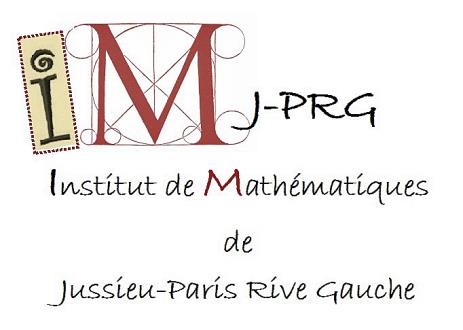


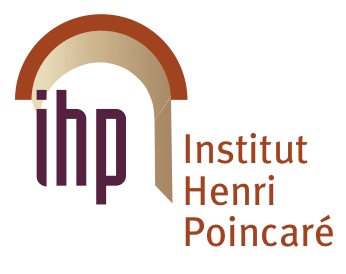
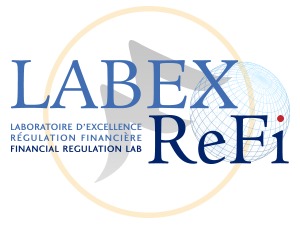
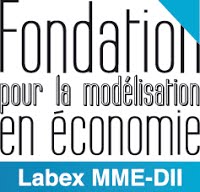
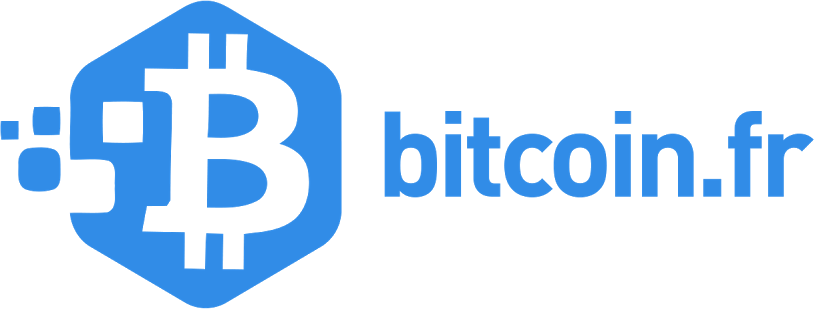
As the Bitcoin Lightning Network grows, more bandwidth, computing power and storage is required to keep an up-to-date view of the network and successfully send payments, making it unsustainable for constrained devices (such as mobile phones).
We will explain how Trampoline Routing enables a simple form of packet-switching, allowing Lightning nodes running on mobile phones to send private payments instantly regardless of the network size.
Next seminar
Bastien Teinturier (ACINQ)
Trampoline Routing
The lightning network was introduced to solve bitcoin's scalability issues. For this reason, it was designed in such a way that it is not necessary for two participants to share a direct channel if they want to send payments to one another. Indeed, one can send payments to any user indirectly by composing channels, i.e. by having several intermediate nodes relay the payment. However, doing this requires having an efficient solution to the routing problem, i.e. having an efficient decentralized algorithm to find a payment route in the network. Ever since the introduction of the lightning network, the routing problem has constantly been a matter of debate, and research for improving routing in the lightning network is still very active. In this talk, I will give an overview of the routing solutions which have been proposed for the lightning network. I will comment on the merits and drawbacks of each of them.
Past seminars
Gabriel Lehéricy (ESILV,De Vinci)
Overview of routing solutions for the lightning network
Le protocole du réseau Bitcoin stipule qu'un mineur doit toujours propager un bloc nouveau dès qu'une preuve de travail a été découverte. Satoshi Nakamoto laisse entendre dans son papier fondateur que tel est l'intérêt du mineur. Cependant, suite à une erreur dans l'algorithme d'ajustement du paramètre de difficulté qui devrait refléter l'exacte puissance de calcul développée par tout le réseau - mais qui ne le fait pas -, ceci n'est pas le cas. Dans certains cas qui dépendent de sa puissance de calcul et de sa connectivité, le mineur a intérêt d'adopter une stratégie déviante de rétention de blocs dont la plus connue est la stratégie dite du minage égoïste. Nous étudions l'application d'une telle stratégie au réseau Ethereum. L'étude est plus complexe que sur Bitcoin car l'algorithme d'ajustement de difficulté est différent ainsi que le système de récompenses accordées aux mineurs. Nous montrons que contrairement à Bitcoin, il n'existe pas une seule stratégie de minage égoïste mais plusieurs. Nous utilisons une méthode combinatoire élémentaire pour calculer explicitement à l'aide de formules fermées les taux de rendement de ces stratégies et nous identifions les cas où ces stratégies sont rentables. Nous montrons que dans un grand nombre de cas significatifs, le mineur a simplement intérêt de ne pas signaler les éventuels ‘‘oncles'' et de laisser tomber les récompenses associées. Ceci confirme que le minage égoïste est avant tout une attaque contre la formule d'ajustement de difficulté sur Ethereum comme sur Bitcoin. Cette attaque est potentiellement dévastatrice sur Ethereum et son effet quasi-immédiat car le temps de minage interblocs est très rapide et l'ajustement de difficulté se fait en continu contrairement à Bitcoin oà il faut attendre la validation de 2016 blocs. L'exposé se base sur un article de recherche récent écrit en collaboration avec Ricardo Pérez-Marco : Selfish Mining in Ethereum : ArXiv:1904.13330https://arxiv.org/abs/1904.13330
The lightning network (LN) is a payment network laid on top of the bitcoin network. It consists in an aggregation of payment channels which allows its users to do off-chain micropayments in bitcoins. It was introduced in the hope of solving bitcoin's scalibility problem. Paying via the LN requires finding a route from the paying node to the payee, hence the need for a suitable routing algorithm. However, the current routing algorithm in use in the LN poses threats to decentralization. In one of their papers, Cyril Grunspan and Ricardo Pérez-Marco proposed a more decentralized routing algorithm, called the ant routing algorithm. In this talk, I will explain the protocol that nodes must follow to perform the ant routing task. I will then propose an implementation of this protocol. Finally, I will estimate the efficiency of this implementation. In particular, I will give an estimate of the number of transactions which the ant routing algorithm can handle. This is joint work with Cyril Grunspan and Ricardo Pérez-Marco.
Mimblewimble is a cryptocurrency protocol, which underlies the recently launched currency Grin. It offers privacy by design and solves the problem of ever-growing blockchains: it allows for deletion of coins once they have been spent while maintaining public verifiability of the ledger, which is not possible in Bitcoin. We give precise definitions of soundness and privacy of such currency systems and formally prove that the Mimblewimble protocol satisfies them. We also show that natural instantiations of Mimblewimble are provably secure under standard cryptographic assumptions.
Les attaques dites de rétention de blocs sont des attaques contre la formule d'ajustement de difficulté de Bitcoin. Elles remettent en cause la stabilité de son protocole dans la mesure où chaque mineur n'est plus incité à miner par dessus le dernier bloc officiel mais peut avoir intérêt à faire cavalier seul. Le minage "à la traîne" est l'une de ces stratégies déviantes proposées par Andrew Miller et al. Elle se caractérise par le fait que le mineur peut être conduit à se battre contre la progression de la blockchain officielle avec des blocs de retard - malgré un taux de hachage inférieur au reste du réseau. Nous prouvons qu'effectivement, dans certains cas et sur le long terme, cette stratégie est plus rentable que la stratégie honnête et que toutes celles proposées par Miller et al. Ce résultat est aussi confirmé par des simulations numériques.
In this work we measure market attention by applying several filters on time series for the trading volume or the SVI Google searches index. We analyze relative impact of these measures either on the mean or on the variance of Bitcoin returns by fitting non linear econometric models to historical data from January 1, 2012 to December 31, 2017; two non-overlapping subsamples are also considered. Outcomes confirm our conjecture that market attention has an impact on Bitcoin returns. Specifically, trading volume related measures affect both the mean and the conditional variance of Bitcoin returns while internet searches volume mainly affects the conditional variance of returns. Motivated by these evidences we propose a continuous time model for Bitcoin price, we obtain an approximate formula for the likelihood and we fit the model to historical data.
Beaucoup a été écrit sur l'inefficience du système de preuves de travail (PoW) utilisé par le protocole Bitcoin, certains allant jusqu'à prédire une proche apocalypse énergétique. Repartant des propriétés et principes premiers du PoW, nous nous interrogerons sur la valeur des modèles couramment utilisés pour illustrer "l'inefficience" du système. Cette discussion nous mènera à la conclusion qu'un cadre conceptuel complet et approprié à la description de la "mécanique" du PoW de Bitcoin reste toujours à définir. Bitcoin attend toujours son Isaac Newtomoto...
The Lightning Network is a new protocol on top of the Bitcoin network, that promises to scale Bitcoin payments to billions of transactions per day. However, the use of Lightning channels also creates new security challenges, especially for light Bitcoin clients, that do not download the entire blockchain. We will discuss the integration of Lightning in Electrum, a light client that verifies transactions using SPV.
On analyse la stratégie de "minage égoiste" et on évalue le coût de l'attaque et sa profitabilité. La durée de l'attaque a été ignorée dans la litérature mais elle est critique. On démontre que la stratégie n'est profitable qu'après un ajustement de la difficulté. C'est donc une attaque à l'algorithme d'ajustement de la difficulté. On propose une amélioration du protocole Bitcoin pour parer l'attaque.
(We review the so called selfish mining strategy in the Bitcoin network and properly evaluate the cost of the attack and its profitability. The expected duration of the attack has been ignored in the literature but is critical. We prove that such strategy can only be profitable after a difficulty adjustment. Therefore, it is an attack on the difficulty adjustment algorithm. We propose an improvement of Bitcoin protocol making it immune to a selfish mining attack.)
Le protocole Bitcoin utilise des signatures numériques pour autoriser les transactions. A l'heure actuelle, c'est le schéma ECDSA (Elliptic Curve Digital Signature Algorithm) qui est employé. Ce choix était logique au moment de la conception du protocole en 2008 car il s'agissait, parmi les schémas ayant fait l'objet d'une standardisation et d'un nombre d'analyses de sécurité et de déploiements significatif, de celui offrant les tailles de signature et les temps de calcul les plus courts. Le schéma de signature de Schnorr, conçu avant le schéma ECDSA mais qui ne s'est pas imposé en raison d'un brevet (aujourd'hui arrivé à expiration), possède néanmoins de nombreux avantages sur ECDSA, en faisant l'une des évolutions du protocole les plus attendues. En particulier, sa structure algébrique plus simple permet d'envisager des applications bénéfiques en terme d'efficacité et de confidentialité impossibles ou trop complexes avec ECDSA. Dans cet exposé, nous présenterons quelques-unes de ces améliorations possibles, en particulier la construction de signatures agrégées permettant de rendre les transactions plus compactes et un mécanisme d'agrégation de clés publiques permettant de rendre les paiements aux adresses "multi-signature" plus protecteurs de la confidentialité des utilisateurs.
Simplicity is a typed, combinator-based, functional language without loops and recursion, designed to be used for crypto-currencies and blockchain applications. It aims to improve upon existing crypto-currency languages, such as Bitcoin Script and Ethereum's EVM, while avoiding some of the problems they face. Simplicity comes with formal denotational semantics defined in Coq, a popular, general purpose software proof assistant. Simplicity also includes operational semantics that are defined with an abstract machine that we call the Bit Machine. The Bit Machine is used as a tool for measuring the computational space and time resources needed to evaluate Simplicity programs. Owing to its Turing incompleteness, Simplicity is amenable to static analysis that can be used to derive upper bounds on the computational resources needed, prior to execution. While Turing incomplete, Simplicity can express any finitary function, which we believe is enough to build useful "smart contracts" for blockchain applications. In this presentation I will focus on how I foresee Simplicity being used in practice, and take a look at how the formalization of Simplicity might connect with the formalization of other languages and protocols.
Despite it often being perceived as such, Bitcoin is not anonymous as all transactions are public. After describing measures to obfuscate Bitcoin transactions, I will mainly talk about alternative cryptocurrencies that propose anonymity by design, such as Monero and the more recent proposal Mimblewimble. I will also discuss the Zerocash protocol, deployed as Zcash, which leverages a cryptographic concept called zk-SNARK. It yields anonymity in a mathematically proven sense but relies on a trusted setup of the system. When the setup is subverted, Zerocash can be counterfeited; however, as I show, anonymity can be made resistant to subversion.
Un réseau de paiement p2p rapide et sans tiers de confiance construit au-dessus de bitcoin.
Bitcoin, and the underlying Blockchain technology, have been hailed as the next generation of financial networks. However, blockchains do not scale to rates that'd allow them to replace established networks, and even less the micropayment economy some people have envisioned. In this talk I will present the Lightning network, a Layer 2 network, that is build on top of Bitcoin. Lightning enables some novel use-cases, e.g., micropayments, better privacy, and real-time transfers, while at the same time reducing the load on the Bitcoin network itself.
Le "minage" du Bitcoin apparaît au premier abord absurde : une colossale quantité de moyens (puces spécialisées, installations, électricité) est dépensée pour décider qui gagnera chaque 10 minutes les quelques Bitcoins créés par le protocole de Satoshi Nakamoto, et non pas pour participer à la gestion de la blockchain et à la surveillance des transactions qui ont un coût négligeable comparé à la course pour le calcul du "hash". Pourtant une analyse plus fine montre que ces calculs apparemment absurdes se retrouvent "contenus" dans la blockchain et contribuent à la rendre infalsifiable, ce qui est essentiel pour la robustesse du protocole général. En cas de "fork" c'est d'ailleurs ce contenu en calcul qui permet de résoudre l'état incohérent du réseau dû à la présence de plusieurs blockchains valides concurrentes. Nous étudierons cette étrange situation mal théorisée aujourd'hui, nous parlerons de la notion mathématique de "contenu en calcul" (la "profondeur logique de Bennett" liée mais différente de la "complexité de Kolmogorov") qui aide à penser proprement le problème des algorithmes de consensus, dont on ne sait pas aujourd'hui s'ils peuvent réellement éviter ce coût du minage d'une blockchain publique et ouverte comme celle du Bitcoin.
Le bitcoin dont on vient de fêter récemment le huitième anniversaire constitue une solution spectaculaire au problème de la double dépense dans un univers numérique décentralisé. La partie mathématique du papier fondateur de Satoshi Nakamoto souffre cependant d'une approximation. La probabilité de réussite d'une double-dépense est estimée en remplaçant grossièrement une loi binomiale négative par une loi de Poisson comme expliqué par Meni Rosenfel dès 2012. Nous reprenons ces calculs et montrons que la dite probabilité peut s'exprimer simplement à l'aide d'une formule fermée mettant en jeu une seule fonction béta régularisée incomplète. Nous montrons ensuite que cette probabilité tend exponentiellement vers 0 en fonction du nombre de confirmations reçues, un résultat souvent cité mais jamais démontré à ce jour. Nous donnons ensuite d'autres formules plus fines en prenant en compte les temps de minage. Enfin, nous étudions la possibilité de réaliser des paiements rapides sans attente de confirmations sur la blockchain.







